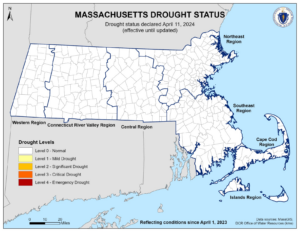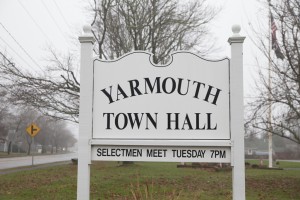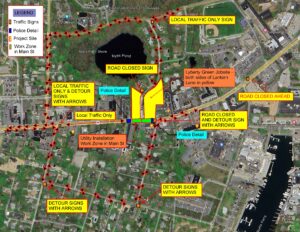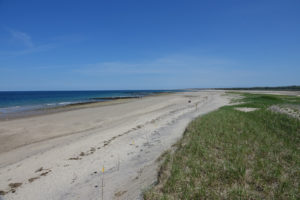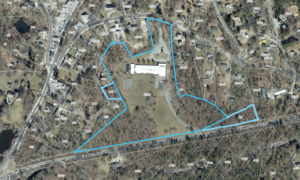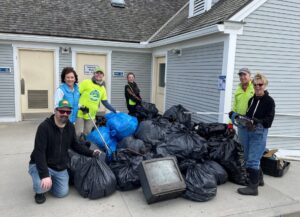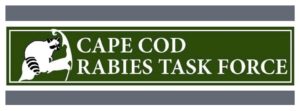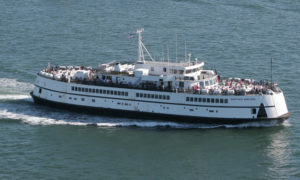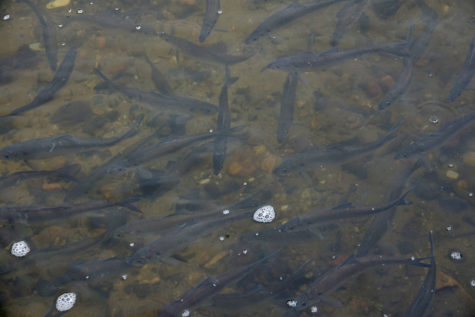 For many Cape Cod residents, it’s not spring unless the herring are swimming up local rivers, en route to their summer spawning areas.
For many Cape Cod residents, it’s not spring unless the herring are swimming up local rivers, en route to their summer spawning areas.
These two species of fish, Alewives and Blueback Herring, swarm the Cape’s streams and rivers from hundreds of miles away in the Atlantic Ocean each spring. Amazingly, each individual returns to breed in the same freshwater bodies in which it was born.
Dedicated Herring Counters keep track of them, but the spectacle is seen by all who pay the runs a visit during peak season in April and May.
When to See Herring on Cape Cod
The rest of Eastern Massachusetts often has herring still in migration through mid-June, but on Cape Cod, you’ll see most of them shuffle through by mid-May. They spend the summers in our water bodies, and then head back to sea before autumn.
When driving near rivers and streams, keep an eye out for frenzied seagulls. That’s a clue that herring are running. Water temperature is a tell, also. The fish really crank into gear at 50 degrees.
Cape Cod Herring Run Locations
Monument River Fishway, Bourne – A critical spot for herring, since the groups which flock up this river system are one of the most productive in Massachusetts.
Santuit Pond Fish Ladder – A dam completed in 2013 separates Santuit Pond from the river of the same name at the Santuit Pond Preserve, Mashpee.
Route 130 Herring Run – Not far from the Santuit Pond Ladder, the Rt. 130 ladder next to the Mashpee Wampanoag Indian Museum is easily accessible.
Eastham Herring Run – Nestled on the aptly-named Herring Brook Road near Bridge Pond Drive.
Stony Brook Road, Brewster – Ah, the drama of the life cycle! While dozens of fish try to splash up the ladder every minute at Stony Brook, hundreds of seagulls circle, waiting to dive in and gulp ‘em down. Thankfully, enough make it past that feathery obstacle to breed in large numbers.
The Harwich Herring Run – Off Depot Street in West Harwich, this location is frequented by volunteer counters (and some machinated ones), donating time to scientific research. They could always use some help!
Types of Herring Found in Cape Cod Waters
Alewives and Blueback Herring, though incredibly similar in appearance, are in fact slightly different.
It is believed that Alewives spawn before Bluebacks, usually when the water temperature is around 41 to 50 degrees.
Both species have an expected lifespan of up to 10 years, but a high rate of predation usually means that less than 1 percent of juveniles make it back to sea from their spawning grounds.
As a foodstuff, these species are invaluable to many predatory birds, land and marine mammals, and some commercially important species of other fish.
Their role in local ecosystems has been described as “invaluable” by local scientists, but human-caused disturbances have furthered the river herrings’ decline. There are 23 river systems on Cape Cod which are monitored by researchers with population counts.
Once at sea, many are caught in commercial ocean trawlers fishing for a different type of herring.
In 2011, a petition to list river herring as endangered was submitted to the National Marine Fisheries Service.
Though the fish have not been declared endangered, a 2006 moratorium put a hold on the harvest, possession or sale of river herring in Massachusetts.
The National Marine Fisheries Service has listed both types as species of concern, due to an overall decline along the East Coast.
Read more about how you can help the herring here.
By CapeCod.com Staff




